Shuai Yuan
FIGhost: Fluorescent Ink-based Stealthy and Flexible Backdoor Attacks on Physical Traffic Sign Recognition
May 17, 2025Abstract:Traffic sign recognition (TSR) systems are crucial for autonomous driving but are vulnerable to backdoor attacks. Existing physical backdoor attacks either lack stealth, provide inflexible attack control, or ignore emerging Vision-Large-Language-Models (VLMs). In this paper, we introduce FIGhost, the first physical-world backdoor attack leveraging fluorescent ink as triggers. Fluorescent triggers are invisible under normal conditions and activated stealthily by ultraviolet light, providing superior stealthiness, flexibility, and untraceability. Inspired by real-world graffiti, we derive realistic trigger shapes and enhance their robustness via an interpolation-based fluorescence simulation algorithm. Furthermore, we develop an automated backdoor sample generation method to support three attack objectives. Extensive evaluations in the physical world demonstrate FIGhost's effectiveness against state-of-the-art detectors and VLMs, maintaining robustness under environmental variations and effectively evading existing defenses.
CoCo-Bench: A Comprehensive Code Benchmark For Multi-task Large Language Model Evaluation
Apr 29, 2025Abstract:Large language models (LLMs) play a crucial role in software engineering, excelling in tasks like code generation and maintenance. However, existing benchmarks are often narrow in scope, focusing on a specific task and lack a comprehensive evaluation framework that reflects real-world applications. To address these gaps, we introduce CoCo-Bench (Comprehensive Code Benchmark), designed to evaluate LLMs across four critical dimensions: code understanding, code generation, code modification, and code review. These dimensions capture essential developer needs, ensuring a more systematic and representative evaluation. CoCo-Bench includes multiple programming languages and varying task difficulties, with rigorous manual review to ensure data quality and accuracy. Empirical results show that CoCo-Bench aligns with existing benchmarks while uncovering significant variations in model performance, effectively highlighting strengths and weaknesses. By offering a holistic and objective evaluation, CoCo-Bench provides valuable insights to guide future research and technological advancements in code-oriented LLMs, establishing a reliable benchmark for the field.
Rethinking Generalizable Infrared Small Target Detection: A Real-scene Benchmark and Cross-view Representation Learning
Apr 23, 2025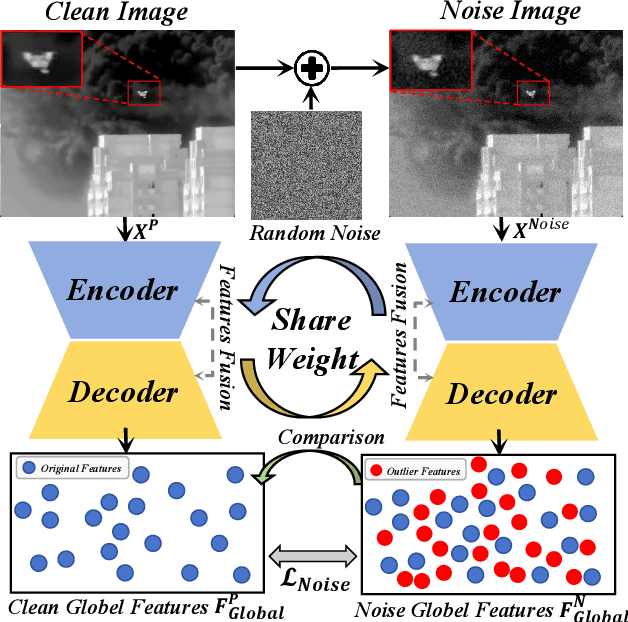
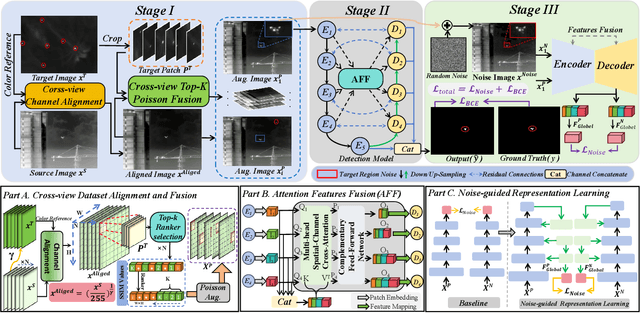
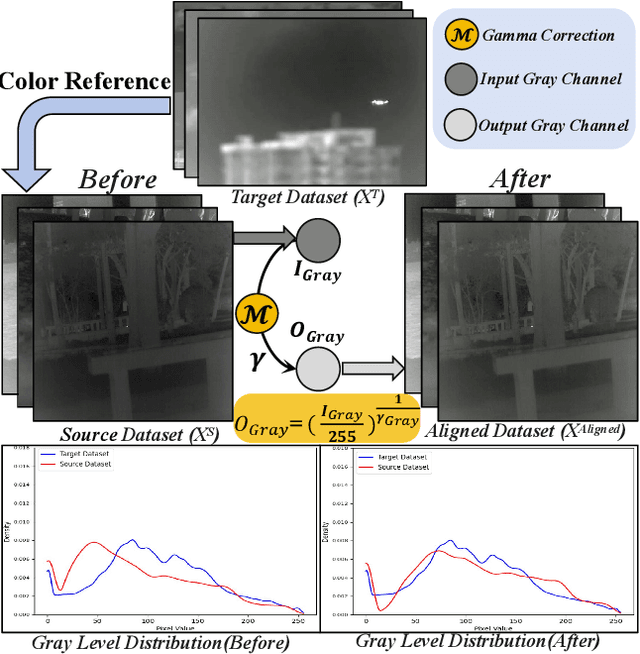
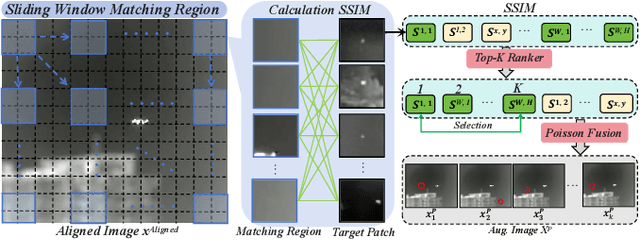
Abstract:Infrared small target detection (ISTD) is highly sensitive to sensor type, observation conditions, and the intrinsic properties of the target. These factors can introduce substantial variations in the distribution of acquired infrared image data, a phenomenon known as domain shift. Such distribution discrepancies significantly hinder the generalization capability of ISTD models across diverse scenarios. To tackle this challenge, this paper introduces an ISTD framework enhanced by domain adaptation. To alleviate distribution shift between datasets and achieve cross-sample alignment, we introduce Cross-view Channel Alignment (CCA). Additionally, we propose the Cross-view Top-K Fusion strategy, which integrates target information with diverse background features, enhancing the model' s ability to extract critical data characteristics. To further mitigate the impact of noise on ISTD, we develop a Noise-guided Representation learning strategy. This approach enables the model to learn more noise-resistant feature representations, to improve its generalization capability across diverse noisy domains. Finally, we develop a dedicated infrared small target dataset, RealScene-ISTD. Compared to state-of-the-art methods, our approach demonstrates superior performance in terms of detection probability (Pd), false alarm rate (Fa), and intersection over union (IoU). The code is available at: https://github.com/luy0222/RealScene-ISTD.
Survey of Video Diffusion Models: Foundations, Implementations, and Applications
Apr 22, 2025Abstract:Recent advances in diffusion models have revolutionized video generation, offering superior temporal consistency and visual quality compared to traditional generative adversarial networks-based approaches. While this emerging field shows tremendous promise in applications, it faces significant challenges in motion consistency, computational efficiency, and ethical considerations. This survey provides a comprehensive review of diffusion-based video generation, examining its evolution, technical foundations, and practical applications. We present a systematic taxonomy of current methodologies, analyze architectural innovations and optimization strategies, and investigate applications across low-level vision tasks such as denoising and super-resolution. Additionally, we explore the synergies between diffusionbased video generation and related domains, including video representation learning, question answering, and retrieval. Compared to the existing surveys (Lei et al., 2024a;b; Melnik et al., 2024; Cao et al., 2023; Xing et al., 2024c) which focus on specific aspects of video generation, such as human video synthesis (Lei et al., 2024a) or long-form content generation (Lei et al., 2024b), our work provides a broader, more updated, and more fine-grained perspective on diffusion-based approaches with a special section for evaluation metrics, industry solutions, and training engineering techniques in video generation. This survey serves as a foundational resource for researchers and practitioners working at the intersection of diffusion models and video generation, providing insights into both the theoretical frameworks and practical implementations that drive this rapidly evolving field. A structured list of related works involved in this survey is also available on https://github.com/Eyeline-Research/Survey-Video-Diffusion.
A comprehensive review of remote sensing in wetland classification and mapping
Apr 15, 2025Abstract:Wetlands constitute critical ecosystems that support both biodiversity and human well-being; however, they have experienced a significant decline since the 20th century. Back in the 1970s, researchers began to employ remote sensing technologies for wetland classification and mapping to elucidate the extent and variations of wetlands. Although some review articles summarized the development of this field, there is a lack of a thorough and in-depth understanding of wetland classification and mapping: (1) the scientific importance of wetlands, (2) major data, methods used in wetland classification and mapping, (3) driving factors of wetland changes, (4) current research paradigm and limitations, (5) challenges and opportunities in wetland classification and mapping under the context of technological innovation and global environmental change. In this review, we aim to provide a comprehensive perspective and new insights into wetland classification and mapping for readers to answer these questions. First, we conduct a meta-analysis of over 1,200 papers, encompassing wetland types, methods, sensor types, and study sites, examining prevailing trends in wetland classification and mapping. Next, we review and synthesize the wetland features and existing data and methods in wetland classification and mapping. We also summarize typical wetland mapping products and explore the intrinsic driving factors of wetland changes across multiple spatial and temporal scales. Finally, we discuss current limitations and propose future directions in response to global environmental change and technological innovation. This review consolidates our understanding of wetland remote sensing and offers scientific recommendations that foster transformative progress in wetland science.
Process-Supervised LLM Recommenders via Flow-guided Tuning
Mar 10, 2025Abstract:While large language models (LLMs) are increasingly adapted for recommendation systems via supervised fine-tuning (SFT), this approach amplifies popularity bias due to its likelihood maximization objective, compromising recommendation diversity and fairness. To address this, we present Flow-guided fine-tuning recommender (Flower), which replaces SFT with a Generative Flow Network (GFlowNet) framework that enacts process supervision through token-level reward propagation. Flower's key innovation lies in decomposing item-level rewards into constituent token rewards, enabling direct alignment between token generation probabilities and their reward signals. This mechanism achieves three critical advancements: (1) popularity bias mitigation and fairness enhancement through empirical distribution matching, (2) preservation of diversity through GFlowNet's proportional sampling, and (3) flexible integration of personalized preferences via adaptable token rewards. Experiments demonstrate Flower's superior distribution-fitting capability and its significant advantages over traditional SFT in terms of fairness, diversity, and accuracy, highlighting its potential to improve LLM-based recommendation systems. The implementation is available via https://github.com/Mr-Peach0301/Flower
SPRec: Leveraging Self-Play to Debias Preference Alignment for Large Language Model-based Recommendations
Dec 12, 2024Abstract:Large language models (LLMs) have attracted significant attention in recommendation systems. Current LLM-based recommender systems primarily rely on supervised fine-tuning (SFT) to train the model for recommendation tasks. However, relying solely on positive samples limits the model's ability to align with user satisfaction and expectations. To address this, researchers have introduced Direct Preference Optimization (DPO), which explicitly aligns recommendations with user preferences using offline preference ranking data. Despite its advantages, our theoretical analysis reveals that DPO inherently biases the model towards a few items, exacerbating the filter bubble issue and ultimately degrading user experience. In this paper, we propose SPRec, a novel self-play recommendation framework designed to mitigate over-recommendation and improve fairness without requiring additional data or manual intervention. In each self-play iteration, the model undergoes an SFT step followed by a DPO step, treating offline interaction data as positive samples and the predicted outputs from the previous iteration as negative samples. This effectively re-weights the DPO loss function using the model's logits, adaptively suppressing biased items. Extensive experiments on multiple real-world datasets demonstrate SPRec's effectiveness in enhancing recommendation accuracy and addressing fairness concerns.
Learning thin deformable object manipulation with a multi-sensory integrated soft hand
Nov 21, 2024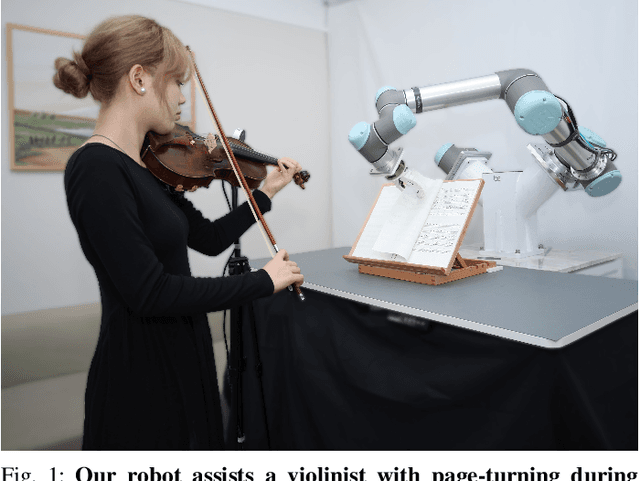
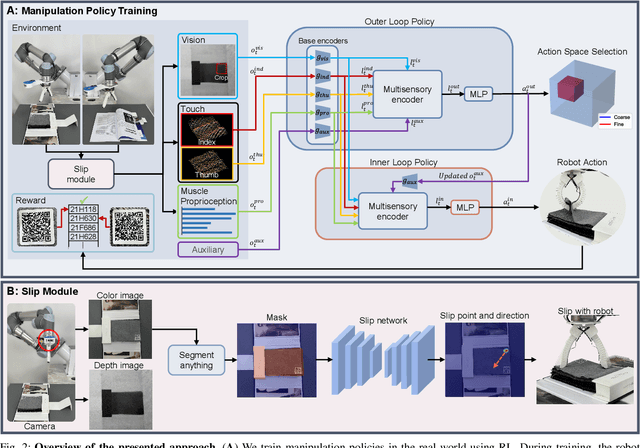
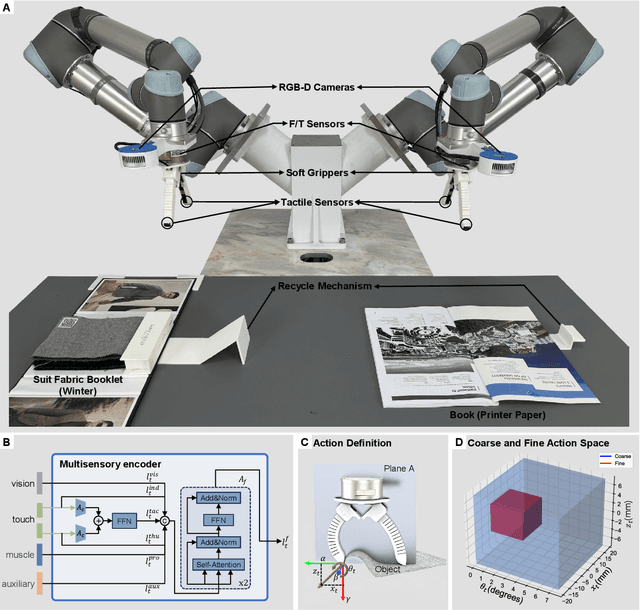
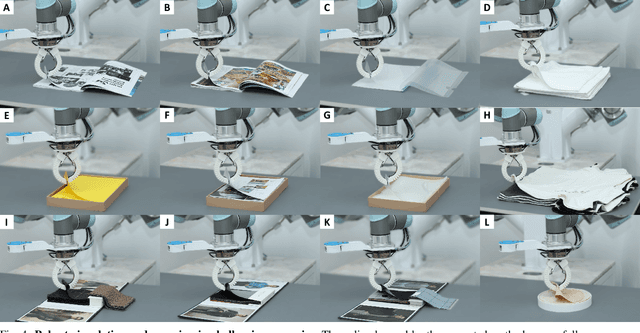
Abstract:Robotic manipulation has made significant advancements, with systems demonstrating high precision and repeatability. However, this remarkable precision often fails to translate into efficient manipulation of thin deformable objects. Current robotic systems lack imprecise dexterity, the ability to perform dexterous manipulation through robust and adaptive behaviors that do not rely on precise control. This paper explores the singulation and grasping of thin, deformable objects. Here, we propose a novel solution that incorporates passive compliance, touch, and proprioception into thin, deformable object manipulation. Our system employs a soft, underactuated hand that provides passive compliance, facilitating adaptive and gentle interactions to dexterously manipulate deformable objects without requiring precise control. The tactile and force/torque sensors equipped on the hand, along with a depth camera, gather sensory data required for manipulation via the proposed slip module. The manipulation policies are learned directly from raw sensory data via model-free reinforcement learning, bypassing explicit environmental and object modeling. We implement a hierarchical double-loop learning process to enhance learning efficiency by decoupling the action space. Our method was deployed on real-world robots and trained in a self-supervised manner. The resulting policy was tested on a variety of challenging tasks that were beyond the capabilities of prior studies, ranging from displaying suit fabric like a salesperson to turning pages of sheet music for violinists.
Training Over a Distribution of Hyperparameters for Enhanced Performance and Adaptability on Imbalanced Classification
Oct 04, 2024



Abstract:Although binary classification is a well-studied problem, training reliable classifiers under severe class imbalance remains a challenge. Recent techniques mitigate the ill effects of imbalance on training by modifying the loss functions or optimization methods. We observe that different hyperparameter values on these loss functions perform better at different recall values. We propose to exploit this fact by training one model over a distribution of hyperparameter values--instead of a single value--via Loss Conditional Training (LCT). Experiments show that training over a distribution of hyperparameters not only approximates the performance of several models but actually improves the overall performance of models on both CIFAR and real medical imaging applications, such as melanoma and diabetic retinopathy detection. Furthermore, training models with LCT is more efficient because some hyperparameter tuning can be conducted after training to meet individual needs without needing to retrain from scratch.
DLCRec: A Novel Approach for Managing Diversity in LLM-Based Recommender Systems
Aug 22, 2024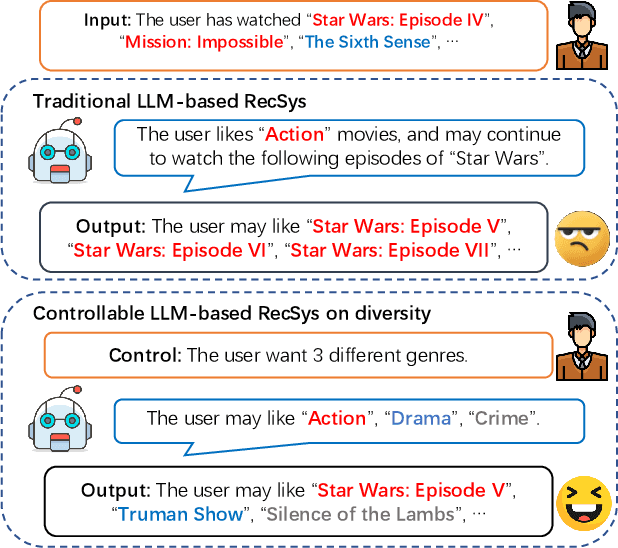
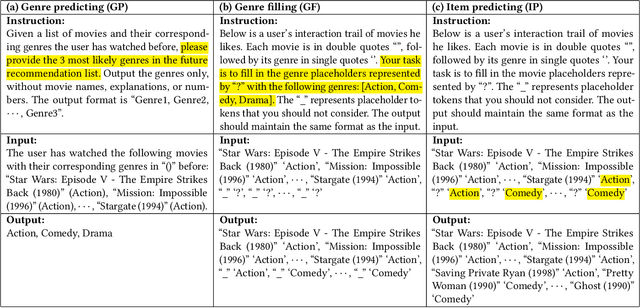


Abstract:The integration of Large Language Models (LLMs) into recommender systems has led to substantial performance improvements. However, this often comes at the cost of diminished recommendation diversity, which can negatively impact user satisfaction. To address this issue, controllable recommendation has emerged as a promising approach, allowing users to specify their preferences and receive recommendations that meet their diverse needs. Despite its potential, existing controllable recommender systems frequently rely on simplistic mechanisms, such as a single prompt, to regulate diversity-an approach that falls short of capturing the full complexity of user preferences. In response to these limitations, we propose DLCRec, a novel framework designed to enable fine-grained control over diversity in LLM-based recommendations. Unlike traditional methods, DLCRec adopts a fine-grained task decomposition strategy, breaking down the recommendation process into three sequential sub-tasks: genre prediction, genre filling, and item prediction. These sub-tasks are trained independently and inferred sequentially according to user-defined control numbers, ensuring more precise control over diversity. Furthermore, the scarcity and uneven distribution of diversity-related user behavior data pose significant challenges for fine-tuning. To overcome these obstacles, we introduce two data augmentation techniques that enhance the model's robustness to noisy and out-of-distribution data. These techniques expose the model to a broader range of patterns, improving its adaptability in generating recommendations with varying levels of diversity. Our extensive empirical evaluation demonstrates that DLCRec not only provides precise control over diversity but also outperforms state-of-the-art baselines across multiple recommendation scenarios.
 Add to Chrome
Add to Chrome Add to Firefox
Add to Firefox Add to Edge
Add to Edge